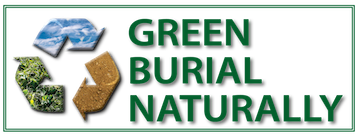PREFACE TO THE SECOND EDITION
My first time in front of a natural burial grave it staggered me to realize that an unadorned suburban American was quietly decomposing into the soil and nourishing the grass that grew at my feet. Two years before while researching plastic recycling I'd come upon the term “green burial” and hadn’t the faintest idea what it referred to. Only a couple dozen cemeteries offered natural burial in the eastern US where I am located. By 2014 when I began actively contacting cemeteries there were 42, and at publication in early 2017 of the first edition of The Natural Burial Cemetery Guide the number had climbed to 63, with a total of 126 nationwide that made it into the guide. The movement was obviously taking off and the difficulties of tracking cemeteries down and collecting their information convinced me that this indepth guide was the best contribution I could make to ensuring this lovely burial option would be around when I needed it.
The guide was never a complete listing of natural options but those included met criteria I felt useful. This Second Edition includes twenty-nine new cemeteries split between hybrid and natural (no new conservation cemeteries have been certified). As many again are in existence but not included. These may be municipal cemeteries that only bury town residents, or hybrids too small to want a wider base of customers. A number of them were too difficult to contact. Highland Cemetery in Kansas has sold out. There are also, sadly, a few that I had to remove for this edition because they are no longer functioning. And a couple that successfully transitioned from one ownership/ management team to a successor.
Hybrid green burial is spreading in New England as state laws change; for example Vermont now allows shallower graves, and in Massachusetts municipalities that are required by state law to provide cemetery space for residents now allow green burials. However the movement there is in its infancy and I’ve encountered confusion among administrators over what being hybrid means, especially as it relates to the traditional burial side. Can you really prohibit toxic embalming and require biodegradable containers in one grave when concrete vaults and varnished mahogany caskets are allowed in the adjacent one? These are rock-bottom stipulations that have been applied successfully around the country, but there are no federal cemetery laws and it's up to each state to decide how to regulate burials.
In addition to new cemeteries the existing burial grounds were asked for updates. You will notice some changes in contact information and price but the really interesting updates are in burial numbers, which illustrate the success and rising popularity of natural burial. Though some areas have risen faster, virtually every cemetery sold more plots and buried more bodies in the last few years. The guide's organizational scheme has been improved with cemeteries now listed on new state maps and a color strip added to the bottom of each page. Many of the cemeteries sent me photos to add to those taken by Tom Bailey to illustrate their entries.
Finally, it’s useful to remember that until green burial really becomes local the definition of “close by” is fluid. I heard from one cemeterian in the West who has difficulty reaching his target community because his address is in one state and the closest city is in another.
A word about funeral homes. As in the first edition I include businesses that help people to get green burial. I contemplated opening these lists to alternative funeral providers but decided not to, as the services they provide are numerous and too varied to fit neatly into the existing category. I urge you to reach out to alternative providers in your community. They have much to offer. The National Home Funeral Alliance is a good resource.
Ann Hoffner, May 2020

